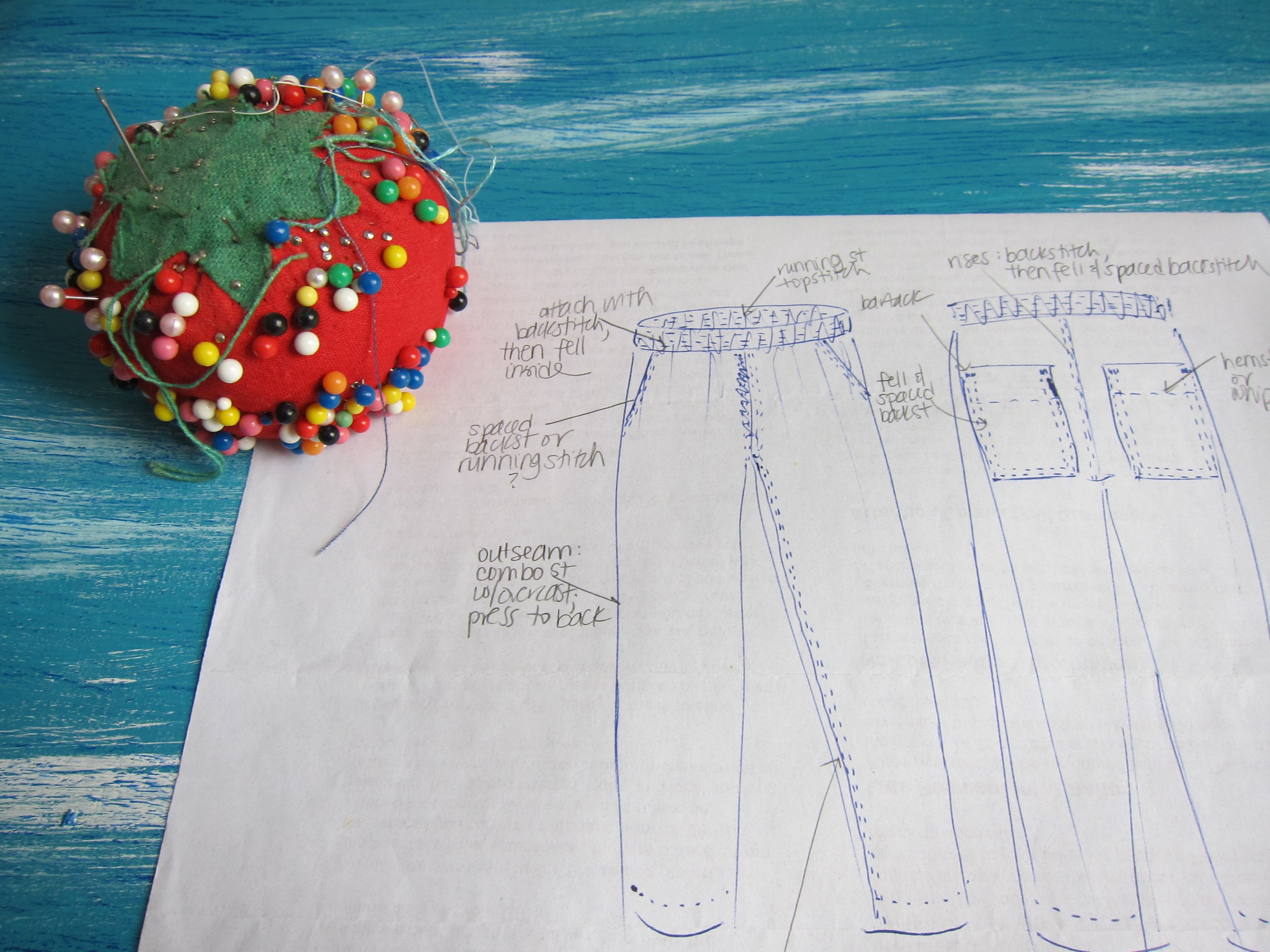Translating Patterns for Hand Sewing
Saturday, Dec. 4, 2021, 11 a.m. - 1:30 p.m. Eastern time (New York time)
Most sewing patterns' instructions are intended for machine sewing. If you're eager to stitch clothing by hand, though, you can easily translate those patterns so that they are just right for hand sewing.
In this one-session class, Louisa will guide you through the questions, techniques, and experiments she uses to assess, plan, and convert preexisting patterns. Learn how to:
interpret sewing pattern instructions
diagram a hand-sewn garment by creating an annotated flat sketch
experiment and assign the right stitches for the right places
plan out the order of operations
and adjust the pattern pieces as needed.
This class focuses on the planning and interpreting stages. In the last hour, Louisa will share a few versatile, strong, useful hand-sewing stitches that will serve you well on any project. While it is not a comprehensive course in garment construction, students will come away with a clear sense of how to translate preexisting sewing patterns for their hands, and with a beginner's toolkit of stitches.
You are welcome to learn from and participate in this class without having a specific pattern in mind. However, if you'd like to follow along with a sewing pattern you already have, then you may wish to have the following:
sewing pattern of your choice
a few blank sheets of paper
sharpened pencil and eraser
tape
ruler (clear gridded ruler is especially good, but any will work)
paper scissors
smallish scraps of fabric you plan to use for the project (several 6" x 6" squares would work) and matching thread
basic hand sewing tools (needle, fabric shears, thimble, pins, iron and board)
optional: colored pencils or other coloring materials
All experience levels are welcome, but this class will be most useful to those who have some garment sewing experience.




